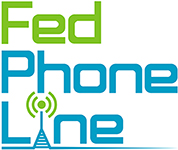Inmates’ communication with their friends and family is very crucial since it plays an important role in maintaining relationships and supporting mental health. Whether you are a family member looking for ways to spend quality time with your loved ones behind bars without breaking the bank or just interested in the inmate Phones Canada system, this guide will cover everything you need.
Federal and provincial regulations govern inmate communications in Canada. This blog explores the inmate phone system in Canada and the services available across Canadian correctional facilities, including their features, restrictions, and tips for navigating the system.
Inmate Phones in Canada: What are they and why do they matter?
Canadian prisons have inmate phone systems in place, usually contracted with private service providers like Bell or Telus. Making calls from jail phones are usually expensive and difficult to understand.
FedPhoneLine provides simple, cost-effective solutions to inmate calling challenges, making it easier and more affordable to stay connected. If you’re struggling with expensive phone bills or the inconvenience of sending money to institutions with no guarantee the funds will reach the inmate in time, FedPhoneLine is here to help.
Save valuable time, money, and effort with a hassle-free way to stay in touch in incarcerated individuals.
How Do Inmate Phone Systems Work in Canadian Correctional Facilities?
Inmate phone systems in Canadian correctional facilities are designed to provide secure and regulated communication between inmates and the outside world. These systems play a crucial role in maintaining connections with family, friends, and legal representatives while adhering to strict security protocols. Understanding how inmate phone systems work in Canada is essential for anyone navigating prison communication.

Canadian prisons use contracted service providers to operate specialized phone systems. Inmates are usually permitted to make outgoing calls to approved contacts. These calls are usually time-limited and may be monitored or recorded for security purposes. Inmates are not allowed to receive calls into the jail, so setting up and managing a phone account is critical for their friends and families.
Inmates can make collect calls or pay for the phone call from their calling accounts. Collect calls allow inmates to reach out to their family and friends without paying for the call, the person receiving the call pays for the call. The issue with collect calls is that smartphones cannot accept collect calls and everyone has a smartphone these days. FedPhoneLine addresses this problem by providing collect calls that can call smartphones and regular home phones, thus making communication easier and more accessible.
The option of calling cards allows the inmate to pay for their own phone calls from their phone accounts. Friends and family can send money to the inmate to add to their phone account.
However, in most institutions, funds are only deposited once a month. If the mail arrives late or is lost, then the inmate will not be able to use the phone for the entire month. Imagine if the inmate needs to speak with you or their lawyer and money did not arrive in time.
This is why most people choose FedPhoneLine collect call numbers, so that they can pay for the inmate’s phone calls and add money whenever they need to by logging into their FedPhoneLine account.
Step-by-Step Guide: Setting Up an Inmate Phone Account in Canada
Want to know how to set up a FedPhoneLine number in Canada? Navigating the inmate telephone system can be a challenge. Here’s a step-by-step guide to using FedPhoneLine for effective and affordable inmate communication. Follow these steps to ensure a hassle-free setup:
Check Facility-Specific Requirements: Start by making sure you know which facility the inmate is in. In order to obtain a FedPhoneLine number you must know which jail the inmate is in. Inmates can transfer facilities so be sure you know where he or she is.
Choose a Service Provider: FedPhoneLine is the best-known provider for inmate calls in Canada. With local phone numbers, fast setup, and transparent billing, friends and families can stay connected without any hassles.
Register for an Account: You can go to the FedPhoneLine website and register for a FedPhoneLine number, it takes between 5 to 10 minutes to sign up and a number is emailed to you right away. Simply sign up on the FedPhoneLine website, choose a plan, select the institution the inmate is in and provide your payment details to get started.
Local Number Setup: After registration and payment, FedPhoneLine emails you a phone number which is local to the jail. You must provide the letter to the inmate whether via letter or during a visit. Inmates calls the FedPhoneLine number and the FedPhoneLine number calls you on your phone.
Top up your account: To pay for your phone calls you add money to your topup account. The cost per call depends on the plan chosen, normally $1.50–$2.00 per call depending on the location. You can add as low as $10 or as high as $100.
Begin to Communicate: Once you have provided your FedPhoneLine number to your inmate, they can use the number right away. However, some institutions may require that the inmate submit the number for approval before adding it to the inmate’s calling list. It may take 1–2 weeks for the jail to approve the phone number. Once the FedPhoneLine number is approved, then the inmate can call.
Affordable Calling Options: Reducing Inmate Phone Costs in Canada
Staying in touch with loved ones through inmate phone systems in Canada can be expensive, but there are ways to make cheap inmate phone calls and reduce prison phone costs. Here are some practical tips to save money on inmate phone calls and make communication more affordable with tools like FedPhoneLine.
Use a Local Number: Jail payphones often charge high rates for long-distance calls. FedPhoneLine gives inmates’ families a phone number that is local to the jail, thus saving on expensive long-distance fees.
Track and Manage Funds: FedPhoneLine’s top-up account system makes it easy to track your balance and add funds when needed. This helps you stay within your budget and avoid any expensive surprises with your phone bill.
Affordable Plan Options: FedPhoneLine has several calling plans that aim to satisfy different communications needs. With this, you can avoid unnecessary charges and save more money on inmate calls.
You can plan ahead to save money on calls through inmates, utilizing the tools on FedPhoneLine to reduce costs and maintain regular and meaningful connections with your loved ones.
By using these strategies, families can make inmate phone calls in Canada affordable and support meaningful connections without financial strain.
Provincial and Federal Inmate Phone Regulations in Canada
Inmate phone regulations in Canada are governed by a mix of federal and provincial prison communication laws. These rules ensure that communication is secure, fair, and compliant with privacy and security protocols while supporting inmates’ rights to maintain connections with loved ones.
The Correctional Service Canada (CSC) oversees inmate phone systems at the federal level in penitentiaries. Inmates incarcerated in federal institutions must use the “Inmate Telephone System” which offers outgoing call services for pre-approved numbers. All federal institutions have inmate calling lists. All inmates must submit their phone numbers to the prison and the prison will verify and approve the numbers. Once approved the numbers are added to the inmates calling list.
This process usually takes 1-2 weeks when the inmate first arrives in the federal prison system. Calls are being monitored and recorded except for privileged communications made with legal representatives. The Inmate Telephone System uses calling card and collect call systems, and federal regulations set call time limits and costs to ensure equitable access.
Provincial inmate phone systems differ depending on the local government contracts and policies. Each province has its own rules regarding phone usage, costs, and approved service providers. For instance, call rates and the types of communication services available may differ between provinces.
Both federal and provincial laws put an emphasis on security and balancing inmate communication rights with public safety. Knowing the difference is vital to navigating the systems of inmate phones in Canada, ensuring one complies with prison communication laws while staying in touch with someone behind bars.
Top Inmate Phone Challenges and Solutions in Canada
Inmate phone services in Canada play a crucial role in maintaining contact between inmates and their families, but they present various challenges. Knowing these inmate phone challenges in Canada can guide families and advocates in finding workable solutions.
COMMON CHALLENGES:
High Costs: One of the most significant prison phone system issues is the cost of calls. Many facilities charge high per-minute long-distance rates, making frequent communication unaffordable for families.
Restricted Access: Inmates are limited to calling pre-approved numbers, often during specific hours. These restrictions can hinder timely communication, especially during emergencies.
Technical Problems: Poor call quality, frequent dropped calls and outdated telephone systems are among the most common technical problems both inmates and their families get frustrated with.
PRACTICAL SOLUTIONS
Seek Discount Services: Take advantage of FedPhoneLine services by having calls made through local numbers.
FAQ
Why are inmate calls so expensive? Costs are due to service contracts and monitoring requirements.
How can I improve call quality and reduce my cost? By creating a FedPhoneLine account, which has an easy sign-up process that includes registration, package selection, and payment, followed by issuing a collect call number to ensure seamless communication without interruptions.
By addressing these challenges, families can enhance communication while navigating Canada’s inmate phone systems.

